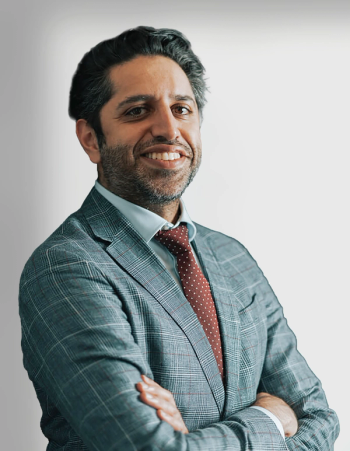
Staying Solutions-Oriented With AD Solutions
Peter Lio, MD, explains the importance of having a wide-range of solutions and how he incorporates alternative approaches alongside conventional medicine.
Episodes in this series

In the Dermatology Times Expert Perspectives series "Advancements in Atopic Dermatitis: Insights from the 2024 Masterclasses in Dermatology Conference," leading dermatologists discuss the advancements in treatments and data for atopic dermatitis (AD) with hand-foot involvement, diversity in clinical trials, and pearls from the American Academy of Dermatology's AD treatment guidelines.
In this episode, Peter Lio, MD, clinical assistant professor of dermatology and pediatrics at Northwestern University Feinberg School of Medicine in Chicago, Illinois, explains how he weaves in integrative, alternative treatments to his patients' routines to treat and manage AD. He shares excitement about the variety of treatment options available and explains his favorite tool to assess patient wellbeing.
Episode Transcript
Lio: I'm very interested in bringing sort of best of different disciplines together in this kind of integrative concept, and to me, when I talk to good clinicians from all over from any kind of tradition, they all sort of do the same thing as well. I feel like it's sort of a natural thing you do because you are focused on your patient on the individual you're focused on their problem and solving it and you will do to some degree what it takes to get them better, and sometimes it's as easy as a conventional topical medicine: you write the prescription, they're fine, great done. We don't have to go any further, but sometimes it's not [fine].
I'm trying to bring in a lot of different ideas I'm trying to give them many options. I'm trying to talk about it as holistically as I can and sometimes it does mean changing your diet, changing your lifestyle, doing relaxation or meditation like all these things that sound kind of silly. Sometimes patients kind of roll their eyes and say, "This seems like a bunch of bologna." But I only do things that I really think have a chance of helping and working, and I try to present them, especially when we have reasonable evidence. It might not be as high as a super well-done, very expensive drug trial, but many times, we have a couple of studies that say, you know, this has helped a group of people, and especially when we consider those risks and benefits balance, right, witha pharmacologic agent, very powerful, but they often come with great responsibility to monitor and make sure they're safe, not causing trouble.
If it's something like meditation or relaxation or breathing exercise, well, it might not be as powerful, but the risks are pretty low, pretty manageable. So we can also put these things together, and that's really what I'm always trying to do.
The most important thing, I think for AD, is [that] I just want to get the word out that we have more treatments than ever before, better treatments than ever before, and we understand this condition better, so I feel that every single patient we should at least be talking to about "how can we get you to the point where you're under great control."
My favorite tool is something that was validated in the past couple of years. It's called the atopic dermatitis control tool, or ADCT. It's 6 questions. It takes about 45 seconds, and it really gives the answer to the most important question of all: Are you under control? When a patient is under control, they tend to be in such a better place. And when they're not, even if, again, they look good that day or look good recently, if they're not under good control, I think that many times they're still suffering and there's often something more we can do for them.
So I'm always looking. Can we add things? Can we change things to get them to that point where they're feeling great?
Transcript edited for clarity
Newsletter
Like what you’re reading? Subscribe to Dermatology Times for weekly updates on therapies, innovations, and real-world practice tips.























